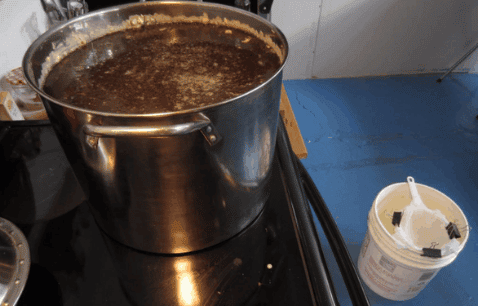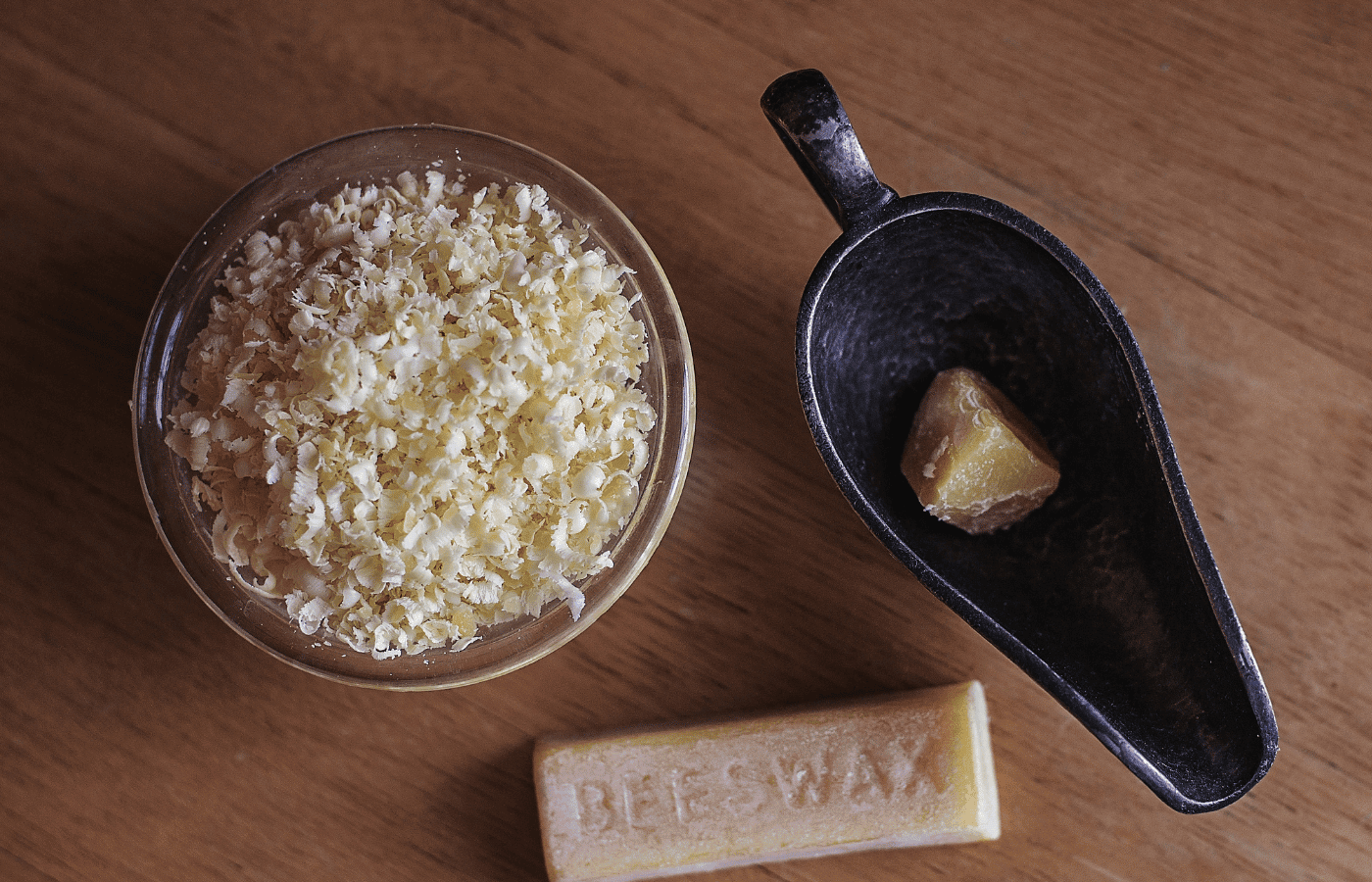There are numbers of ways how to filter beeswax for candlemaking. Filtration gets rid of all residue hiding inside beeswax. It makes a purer form of beeswax and thus a more expensive candle.
Several methods for filtering residues from your beeswax include using cheesecloth and even vegan-friendly coffee filters.
When filtering beeswax for candlemaking, stay cautious of the hot wax. Wear eye equipment and other gear to protect yourself from harmful chemicals.
How Do You Filter Beeswax for Candles?
It is possible to filter beeswax for candles in numerous ways. The best way to filter beeswax is by straining it through a cheesecloth. Cheesecloths remove excess particles by trapping them inside the enclosed bundle of cloth.
You can also use clean t-shirts and cotton rags to filter beeswax instead of a cheesecloth. Using a cloth to filter beeswax makes removing impurities easy. Cloth filters are environmentally friendly because they are recycled, and you can reuse them time and time again.
Use the cloth to siphon out residue but remain cautious of wax’s melting point of 70 degrees. If wax burns, you must start over with a new cloth and bath of beeswax.
To check the current price and availability of Cheesecloth, click here to view the selection on Amazon.
Methods to Filter Beeswax

Cleaning beeswax plays an important role in the quality of your final beeswax product. Failing to filter your beeswax enough can be plain disappointing and can go against health standards in some cases.
A rule of thumb when it comes to beeswax and candlemaking is that you must always let your beeswax sit overnight before trying to cut into it. Letting your candle sit allows impurities to settle to the bottom of your wax.
The following shows how to filter beeswax for candle making:
- Heat your wax in a pot
- Strain your beeswax
- Let it cool for 24 hours
- Remove the beeswax
- Pour the water outside
- Scrape the bottom of your wax
- Repeat the process (as needed!)
There are many types of filters and methods to use for straining your beeswax.
Cheesecloth Straining to Filter Beeswax
Cheesecloth is great for straining debris from hot wax. As a bundle of wax, cheesecloth contains all impurities in one dense location.
Place wax inside the cheesecloth. The wax inside your cheesecloth should fit snuggly. Tie it securely at the top with a string. Put your cheesecloth inside a pot of 3-4 inches of water. Slowly bring this pot to a boil and watch the wax filter out of it! After a few minutes, let it settle then remove the impurities from inside the cheesecloth.
Using multiple layers of cheesecloth can be helpful when there is an extensive amount of residue in your wax.
Using Coffee Filters to Filter Beeswax
Coffee filter strainers are intuitive and eco-friendly ways to filter beeswax. Straining your beeswax with coffee filters can be done as a fun, DIY project or integrated as a reliable part of your formal practice.
Things you need to make DIY coffee filter beeswax jars:
- Clean glass jars
- Unused coffee filter
- Rubberbands or clothespins
- Melted beeswax
Using coffee filters to purify your beeswax is easy! Secure your coffee filter around the rim of your cup with a rubber band, and then pour your melted beeswax inside!
If you do not have rubber bands, you can use a clothespin instead.
Only use new coffee filters. A used coffee filter may have coffee grounds on them that can further contaminate your beeswax.
To check the current price and availability of Coffee Filters, click here to view the selection on Amazon.
Using T-Shirts to Filter Beeswax
After melting your wax, pour it into a bowl lined with a clean, scent-free cloth. Cloth is more versatile than coffee filters because of its size. For instance, t-shirts can filter more beeswax than coffee filters which is very convenient for makers who produce large batches of beeswax.
Remember, the type of fabric used to filter your beeswax will impact how your beeswax drips. Some fabrics are more breathable than others. Choosing a light and airy fabric can help your beeswax can drip properly without letting impurities drip through.
Gravity Filtration Method to Filter Beeswax
Gravity filtration uses gravity to filter impurities from wax. Natural gravity filtration is one of the most popular and successful methods used to filter the impurities from beeswax.
Put 3-4 inches of water and your beeswax in a stainless steel pot. Slowly bring them to a simmer until the beeswax completely melts.
The gravitation method assumes that impurities will lower to the bottom of the pot, and your beeswax will rise to the top.
After the wax cools, carefully dig a knife along the inside of your pot and gently pop the wax out.
Pour out the water outside and cut off impurities that may remain on the base of your wax.
How Do You Filter Dirty Beeswax?
Double up on your filters and run your wax through its cleaning process multiple times to filter dirty beeswax.
There can be many impurities in beeswax. If your beeswax is very dirty, then not all impurities will disappear on the first round of your cleaning.
Try running your beeswax through your cleaning process a second or third time to strain your beeswax clean.
Filter Dirty Beeswax Using Multiple Filters
If the residues are large double up on the materials, you are using to strain the beeswax. Additional filters will help block particles and residue from getting through.
Double up on coffee filters and then run excessively dirty beeswax through its normal filtration process as usual. Twice, if not more.
Filter Dirty Beeswax Through the Cleaning Process More Times
Running beeswax through the cleaning process multiple times can help strain impurities. Do this when discoloration or residue in the beeswax that is smaller than your filters can pick out.
The more filtration you put your beeswax through, the fewer residues that will be in it. Empty all impurities and pour your beeswax again until you reach a state of cleanliness that pleases you.
Utensils and Equipment for Filtering Beeswax
Dedicate special equipment for melting beeswax, aside from the ones you use to cook food. Beeswax can have a similar reaction to grease and may cause fires in the kitchen, so getting it on the wrong dishes can be hazardous.
Furthermore, beeswax is difficult to clean, and once it is on a product, it is not likely to come off. To be safe, separate your beeswax dishes and utensils from others. If you are a beeswax maker, dedicate a space for making beeswax.
How Do You Clarify Beeswax?
Continuously cleaning your beeswax can lead to greater clarity.
Clarified beeswax is a fancy term for clear beeswax. The benefit of clear beeswax is how great it makes your beeswax look. Beeswax that has gone through intense clarification looks very similar to honey which seems nice.
However, clear beeswax does not mean that it is going to be good beeswax. Typically, the more yellow beeswax is in color, the better quality the beeswax is. Clarity would mean that the beeswax has been processed too many times and lost its value!
Final Thoughts
There are many different methods to filtering beeswaxes like cloth and even coffee filters. When working with beeswax, use only the best purification methods like gravity filtration, one of the most popular methods among candlemakers.
There are a variety of ways how to filter beeswax for candlemaking. Cheesecloth straining can provide consistent results. These are time-consuming, which is why many people choose gravity filtration. Gravity filtration is less time-consuming but still hands-on.
Consider the amount of time you are willing to dedicate and the results you want before starting each beeswax cleaning project. Beeswax is just as flammable as grease, so while filtering beeswax, you should be in a proper environment wearing the right protective gear.



